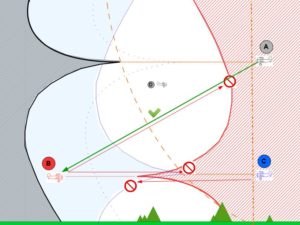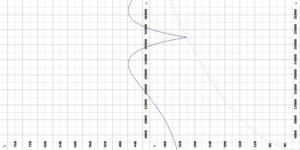Simplified principles
Simplified principles
GRound range and relief masking
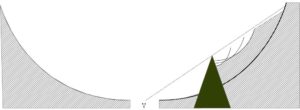
Note the masking soft effects. Crosshatching zones show out of range.
Also using radio communication with a frequency below 30 MHz will not be cut by relief.
AIRborne range
In orange, theorical curves of ranges according to the aircraft altitudes and distances :
Altitude effect : More high, more range
Cardioid effect (0.1.4.1) : more altitude gap, more range
How do aircraft A, B, C and D transmit ? :
- A can not hear B : too distant, B too low, but B can hear A.
- C can not hear B : too distant. For hearing it, C must be out of the red crosshatching zone.
- D seems be at the good altitude and distance for hearing everyone.
Ranges of radios
Power of radios change ranges. UHF radio set is more powerful.
Tower and AWACS radio have more range than A/C one (or ground mobile set), so an A/C could hear ATC but reverse none.
Curves of rangeS
Aircraft ranges (range in nm by emitter altitude in feet):
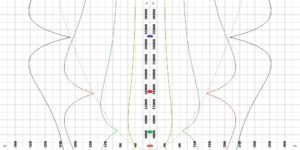
A/C ranges for altitudes 30000ft 15000ft 5000ft and 10000ft.
For hearing then, receiving A/C must be in the good zone.
Transmitting A/C location are drawn as color dots on right side.
Ground vehicle transmitter :
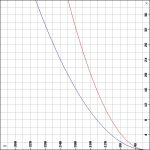
Note the gap between UHF transmitter and VHF transmitter for a mobile radio at ground.
